All Images
News Release 10-151
Genetic Structure of First Animal to Show Evolutionary Response to Climate Change Determined
Pitcher plant-dwelling mosquito shows effects of Earth's rapidly changing climate
This material is available primarily for archival purposes. Telephone numbers or other contact information may be out of date; please see current contact information at media contacts.
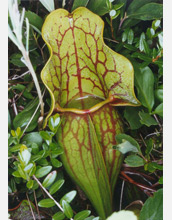
The pitcher plant mosquito develops entirely within the water-filled purple pitcher plant.
Credit: William Bradshaw and Christina Holzapfel
Download the high-resolution JPG version of the image. (113 KB)
Use your mouse to right-click (Mac users may need to Ctrl-click) the link above and choose the option that will save the file or target to your computer.
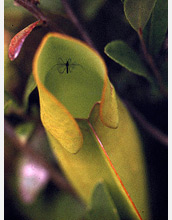
An adult female mosquito descends into a purple pitcher plant leaf in southern Wisconsin.
Credit: Christina Holzapfel and William Bradshaw
Download the high-resolution JPG version of the image. (151 KB)
Use your mouse to right-click (Mac users may need to Ctrl-click) the link above and choose the option that will save the file or target to your computer.
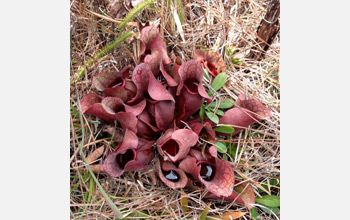
Populations of Wyeomyia smithii migrated north along the Atlantic Coast about 20,000 years ago.
Credit: Christina Holzapfel and William Bradshaw
Download the high-resolution JPG version of the image. (380 KB)
Use your mouse to right-click (Mac users may need to Ctrl-click) the link above and choose the option that will save the file or target to your computer.
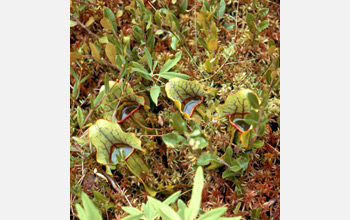
The purple pitcher plant, Sarracenia purpurea, ranges from the Gulf of Mexico to Canada.
Credit: Christina Holzapfel and William Bradshaw
Download the high-resolution JPG version of the image. (324 KB)
Use your mouse to right-click (Mac users may need to Ctrl-click) the link above and choose the option that will save the file or target to your computer.
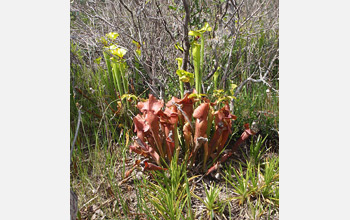
In northern Florida, S. purpurea overlaps with S. flava with which it can form hybrids.
Credit: Christina Holzapfel and William Bradshaw
Download the high-resolution JPG version of the image. (354 KB)
Use your mouse to right-click (Mac users may need to Ctrl-click) the link above and choose the option that will save the file or target to your computer.
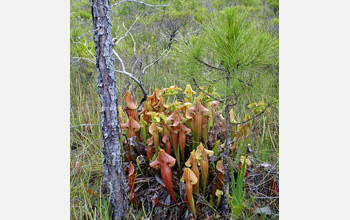
This hybrid S. purpurea and S. flava plant has red leaves and is more than 35 years old.
Credit: Christina Holzapfel and William Bradshaw
Download the high-resolution JPG version of the image. (324 KB)
Use your mouse to right-click (Mac users may need to Ctrl-click) the link above and choose the option that will save the file or target to your computer.
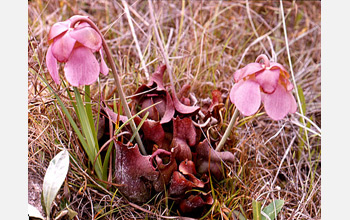
The pitcher plant in this image has the pink flowers characteristic of Gulf Coast populations.
Credit: Christina Holzapfel and William Bradshaw
Download the high-resolution JPG version of the image. (476 KB)
Use your mouse to right-click (Mac users may need to Ctrl-click) the link above and choose the option that will save the file or target to your computer.
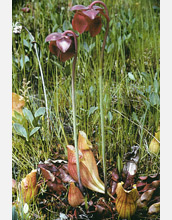
Crimson flowers are indicative of northern populations of the purple pitcher plant.
Credit: Christina Holzapfel and William Bradshaw
Download the high-resolution JPG version of the image. (282 KB)
Use your mouse to right-click (Mac users may need to Ctrl-click) the link above and choose the option that will save the file or target to your computer.


